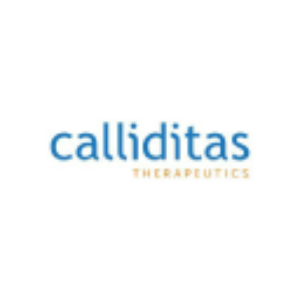Everest Medicines Announces Partner Calliditas Therapeutics Reports Positive Topline Results from Phase 3 NefIgArd Trial Evaluating Nefecon in IgA Nephropathy
Everest Medicines announced that its partner Calliditas Therapeutics reported positive topline results from the Phase 3 clinical trial NefIgArd, evaluating Nefecon in patients with primary IgA nephropathy (IgAN). The trial met its primary endpoint, showing a statistically significant improvement in estimated glomerular filtration rate (eGFR) with Nefecon compared to placebo (p < 0.0001). Results indicated an average eGFR increase of 5.05 mL/min/1.73 m2 with Nefecon. The treatment appears well-tolerated, supporting its efficacy as a disease-modifying therapy. Calliditas plans to seek full FDA approval and additional regulatory submissions in 2023.
- Nefecon showed a statistically significant benefit over placebo in eGFR (p < 0.0001).
- Average eGFR was 5.05 mL/min/1.73 m2 higher with Nefecon compared to placebo.
- Results support Nefecon as a disease-modifying treatment for IgAN.
- Calliditas intends to file for full FDA approval in 2023.
- The clinical results are subject to future regulatory approval outcomes.
- Dependence on market acceptance and competition post-approval.
Insights
Analyzing...
The trial met its primary endpoint with Nefecon demonstrating a highly statistically significant benefit over placebo (p value < 0.0001) in estimated glomerular filtration rate (eGFR) over the two-year period of 9-months of treatment with Nefecon or placebo and 15-months of follow-up off drug. The analysis included 364 patients diagnosed with primary IgAN and who were on a background of optimized and stable renin-angiotensin system (RAS) inhibitor therapy. The patients were randomized in a 1:1 ratio into one of two treatment groups – Nefecon 16 mg/day orally or placebo – and treated for 9 months daily, and then monitored for 15 months off-drug.
The key primary endpoint, eGFR over 2 years, was on average 5.05 mL/min/1.73 m2 higher with Nefecon compared to placebo (p<0.0001). Mean change in eGFR over the 2-year period was -2.47 mL/min/1.73 m2 for Nefecon 16 mg versus -7.52 mL/min/1.73 m2 for placebo. A treatment benefit on eGFR was apparent across baseline UPCR subgroups, and sustained proteinuria effects and long lasting eGFR treatment benefit were observed even after 15 months after discontinuation, supporting disease modification. The results also indicate that Nefecon was generally well-tolerated and the safety profile was consistent with that observed in Part A of the trial.
"We are very excited to see Nefecon's sustained impact on kidney function across the entire study population, that demonstrates its effect as a truly disease modifying first-in-disease treatment for IgAN patients. The sustained effects on proteinuria and on eGFR offer a specially designed treatment for IgAN patients at risk of progressive kidney function loss," said
This data readout from Part B provides longer term data from the Phase 3 NefIgArd trial, which read out topline data on Part A in
Chinese subpopulation Part B topline results are expected to be available in Q3, 2023.
About Nefecon
Nefecon is a patented oral, delayed release formulation of budesonide, a corticosteroid with potent glucocorticoid activity and weak mineralocorticoid activity that undergoes substantial first pass metabolism. The formulation is designed as a delayed release capsule that is enteric coated so that it remains intact until it reaches the Peyer's patch region of the lower small intestine. Each capsule contains coated beads of budesonide that target mucosal B-cells present in the ileum where the disease originates, as per the predominant pathogenesis models.
In
Trial Design
The global clinical trial NefIgArd is an ongoing Phase 3, randomized, double-blind, placebo- controlled, multicenter study to evaluate the efficacy and safety of Nefecon 16 mg once daily vs placebo in adult patients with primary IgAN as an addition to optimized RAS inhibitor therapy.
Part A of the study included a 9-month blinded treatment period and a 3-month follow-up period. The primary endpoint was UPCR, and eGFR was a secondary endpoint. Part B included a 12-month observational period off drug and assessed eGFR over the entire 2-year period for patients who were treated with the Nefecon or placebo regimen in Part A in a total population of 360 patients.
The trial met its primary objective in Part A of demonstrating a statistically significant reduction in urine protein creatinine ratio (UPCR) or proteinuria after 9 months of treatment with 16 mg once daily of Nefecon compared to placebo. Patients taking Nefecon plus RAS inhibition (n=97) showed a statistically significant
At 9 months, there was a 3.87 mL/min/1.73 m2 difference in eGFR absolute change with Nefecon plus RASi vs RASi alone (-0.17 vs. -4.04).
Topline data of the NefIgArd study were reported in
About Everest Medicines
Forward-Looking Statements
This news release may make statements that constitute forward-looking statements, including descriptions regarding the intent, belief or current expectations of the Company or its officers with respect to the business operations and financial condition of the Company, which can be identified by terminology such as "will," "expects," "anticipates," "future," "intends," "plans," "believes," "estimates," "confident" and similar statements. Such forward-looking statements are not guarantees of future performance and involve risks and uncertainties, or other factors, some of which are beyond the control of the Company and are unforeseeable. Therefore, the actual results may differ from those in the forward-looking statements as a result of various factors and assumptions, such as future changes and developments in our business, competitive environment, political, economic, legal and social conditions. The Company or any of its affiliates, directors, officers, advisors or representatives has no obligation and does not undertake to revise forward-looking statements to reflect new information, future events or circumstances after the date of this news release, except as required by law.
SOURCE







